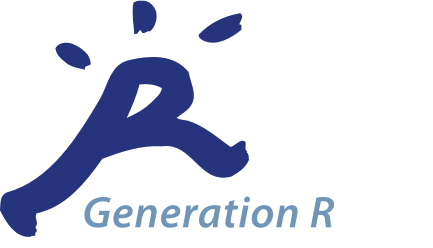-
measure Children’s Emotion Management Scale - Short version (CEMS)
Study: Generation R Mode of collection: SelfAdministeredQuestionnaire Available measurements: Main Cohort 9-10 yearsA shortened version of the Children’s Emotion Management scale (CEMS) was assessed. The CEMS is a self-report questionnaire assessing inhibition, coping and dysregulation in anger, sadness and worry.Created May 3, 2023 • Updated May 3, 2023 -
measure Early Adolescent Temperament Questionnaire (EATQ)
Study: YOUth Mode of collection: SelfAdministeredQuestionnaire Available measurements: Child and Adolescent 9 years 12 yearsThe Early Adolescent Temperament Questionnaire (EATQ) is designed to specifically tap experiences common to adolescents, and is available in self- and parent-report formats. It assesses temperament and self-regulation via adaptation of scales used in studies of children and adults. It has 10 subscales: Activation Control (the capacity to perform an action...Created March 28, 2023 • Updated March 30, 2023 -
measure The Balloon Analogue Risk Task (BART)
Study: YOUth Mode of collection: MeasurementsAndTests Behavioral/cognitive task Available measurements: Child and Adolescent 12 yearsThe Balloon Analogue Risk Task (BART) is a computerized measure of risk-taking behavior. The BART models real-world risk behavior through the concept balancing the potential for reward versus loss. In the task, the participant is presented with a balloon and offered the chance to earn money by pumping the balloon. Each click causes the balloon to...Created March 28, 2023 • Updated March 30, 2023 -
measure Brief Barrat Impulsivity Scale (Brief-BIS) and risk behavior (substance (ab)use)
Study: YOUth Mode of collection: SelfAdministeredQuestionnaire Available measurements: Child and Adolescent 9 years 12 yearsThe Barratt Impulsivity Scale (Brief-BIS), a self-report measure, is one of the most commonly used scales for the assessment of the personality construct of impulsiveness. It measures 3 theoretical subtraits, namely, attentional, motor, and non-planning impulsiveness.Created March 28, 2023 • Updated March 30, 2023 -
measure Functional MRI Inhibition experiment scan
Study: YOUth Mode of collection: MeasurementsAndTests MRI Available measurements: Child and Adolescent 9 years 12 yearsFunctional MRI acquired while subjects performed a task. The task aims to measure performance and brain activation during actual stopping as well as during the anticipation of stopping. Trials begin with the presentation of a cue (0, * or *), representing the stop-signal probability (0, 22 and 33% respectively). Permanently visible are three horizontal...Created March 28, 2023 • Updated March 30, 2023 -
measure Delay Discounting - hypothetical
Study: YOUth Mode of collection: MeasurementsAndTests Behavioral/cognitive task Available measurements: Child and Adolescent 9 years 12 yearsThe Delay Discounting task is the most widely used paradigm to measure the capacity to wait for a hypothetical monetary reward in children between 8-18 years old. A child is given a series of option between a variable immediate monetary reward and 10 Euros after a certain delay. The delay of the 10 Euro reward varies between 2, 30, 180, or 365 days. Each...Created March 28, 2023 • Updated March 30, 2023 -
measure Functional MRI Inhibition experiment behavior
Study: YOUth Mode of collection: MeasurementsAndTests Behavioral/cognitive task Available measurements: Child and Adolescent 9 years 12 yearsBehavioral output file accompanying the functional MRI acquired while subjects performed a task. The task aims to measure performance and brain activation during actual stopping as well as during the anticipation of stopping. Trials begin with the presentation of a cue (0, * or **), representing the stop-signal probability (0, 22 and 33% respectively)....Created March 28, 2023 • Updated March 30, 2023 -
measure Child Gap Antisaccade
Study: YOUth Mode of collection: MeasurementsAndTests Eyetracking Available measurements: Baby and Child 6 years
Child and Adolescent 9 years 12 yearsThe Gap-overlap task is a gaze contingent paradigm that measures visual attention shifting between a central and a peripheral stimulus. This is thought to be a key sub process underlying behavioral control. The Gap-overlap task contains three conditions; i) Gap, in which the central stimulus disappears 200ms before the appearance of the peripheral target;...Created March 28, 2023 • Updated March 30, 2023 -
measure Inhibition experiment (mock scanner)
Study: YOUth Mode of collection: MeasurementsAndTests Behavioral/cognitive task Available measurements: Child and Adolescent 9 years 12 yearsBehavioral output file of the inhibition experiment practice run preceding the Functional MRI Inhibition experiment.Created March 28, 2023 • Updated March 30, 2023 -
measure Behavioral Inhibition and Activation Scale (BIS/BAS)
Study: L-CID Mode of collection: SelfAdministeredQuestionnaire Available measurements: Middle Childhood Cohort T3 T4 T5 T6The Behavioral Inhibition and Activation Scales (BIS/BAS) measure behavioral inhibition (BIS) and behavioral activation (BAS). This instrument consists of one inhibitory factor (BIS scale) and three activational factors (BAS scales). The BIS scale includes items that refer to the anticipation of punishment. The BAS scales consist of items that refer to...Created March 28, 2023 • Updated March 28, 2023 -
measure Early Adolescent Temperament Questionnaire (EATQ)
Study: L-CID Mode of collection: SelfAdministeredQuestionnaire Available measurements: Middle Childhood Cohort T4 T6The Early Adolescent Temperament Questionnaire (EATQ) is designed to specifically tap experiences common to adolescents, and is available in self- and parent-report formats. It assesses temperament and self-regulation via adaptation of scales used in studies of children and adults. It has 10 subscales: Activation Control (the capacity to perform an action...Created March 28, 2023 • Updated March 28, 2023 -
measure Early Adolescent Temperament Questionnaire (EATQ)
Study: L-CID Mode of collection: SelfAdministeredQuestionnaire Available measurements: Early Childhood Cohort T6 - Covid
Middle Childhood Cohort T3 T4 T5 T5 - Covid T6The Early Adolescent Temperament Questionnaire (EATQ) is designed to specifically tap experiences common to adolescents, and is available in self- and parent-report formats. It assesses temperament and self-regulation via adaptation of scales used in studies of children and adults. It has 10 subscales: Activation Control (the capacity to perform an action...Created March 28, 2023 • Updated March 28, 2023



